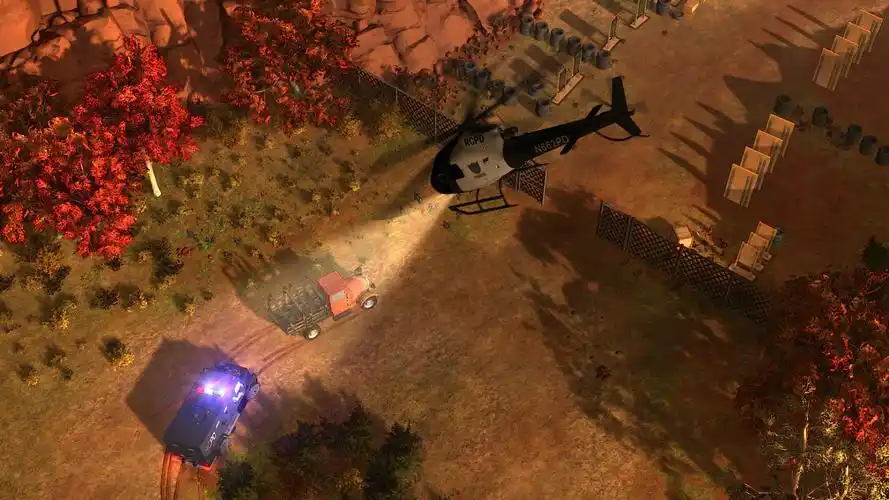Title: Dousing Digital Flames: How the 'Place Missions' Update Ignites New Life into Fire Hose Sign Installer Simulator VR
The virtual reality landscape is perpetually evolving, offering users experiences that range from the fantastical to the hyper-realistic. Nestled within the latter category is the uniquely niche and surprisingly engaging Fire Hose Sign Installer Simulator VR. For the uninitiated, the game tasks players with the meticulous and crucial job of correctly installing fire hose cabinet signs in various commercial buildings, ensuring compliance with safety regulations. While its premise might sound mundane, the game’s meditative pace, attention to detail, and satisfying gameplay loop have cultivated a dedicated community. The latest ‘Place Missions’ update isn't just a content drop; it's a fundamental evolution that redefines the simulator's purpose and dramatically expands its replayability.
Prior to the update, the core gameplay involved following precise blueprints and instructions to install signs at pre-marked locations. The challenge was in the execution: measuring, drilling, and mounting with care to avoid penalties for sloppy work. The ‘Place Missions’ update shatters this linear structure by introducing a new game mode that empowers the player with genuine professional responsibility. Instead of simply following orders, you are now tasked with conducting your own survey of a building and deciding where the signs need to go based on your knowledge of fire safety codes.
This shift from passive installer to active safety consultant is transformative. The update includes a digital codebook within your VR clipboard, detailing regulations about sign visibility, placement height, proximity to the actual hose cabinet, and lighting conditions. Stepping into a new, complex environment—like a sprawling office floor, a labyrinthine warehouse, or a multi-story hotel—you must now rely on your own judgment. You physically walk through the digital space, inspecting corners, assessing sightlines, and identifying potential hazards or obstructions. This active investigation makes the virtual world feel more tangible and your role far more impactful. The quiet solitude of an empty building is broken only by your own humming deliberation and the rustle of virtual pages as you consult your codebook, creating an intensely immersive and thoughtful experience.
The brilliance of the ‘Place Missions’ update lies in its emergent gameplay. No two playthroughs of a Place Mission are the same because the optimal sign placement isn't always a single, obvious answer. You might debate with yourself whether a sign is better placed on a structural pillar for 360-degree visibility or directly on the wall adjacent to the cabinet for immediate clarity. You must consider the flow of human traffic; a sign placed correctly by the codebook might be obscured by a frequently opened door or a piece of moved furniture. This layer of strategic decision-making elevates the game from a simple simulator to a thoughtful puzzle-game hybrid. The satisfaction no longer comes only from a perfectly level installation but from designing and implementing a complete safety solution yourself.

Furthermore, the update introduces a new scoring and evaluation system tailored to this mode. Upon completing your installation, the game switches to an inspection view. A virtual safety officer, represented by a floating clipboard with score metrics, tours your chosen locations. Your score is based on code compliance, the logical flow of your placement plan, and the overall coverage of the area. Achieving a five-star "Fully Compliant" rating requires deep understanding and foresight, offering a significant challenge for veteran players. This system provides clear goals and a powerful incentive to replay missions, constantly refining your strategy and knowledge to achieve perfection.
Social VR integration is another cornerstone of this update. The ‘Place Missions’ mode supports co-operative play, allowing two players to survey a site together. This fosters fantastic teamwork and communication; one player can read aloud from the codebook while the other scouts potential locations, debating the merits of each spot in real-time. This collaborative problem-solving captures the essence of real-world professional consultation and turns the simulator into a shared, cerebral adventure. Additionally, the developers have launched a new online leaderboard for the fastest five-star completion of each Place Mission, adding a layer of friendly competition for those who have mastered the codes.
In conclusion, the ‘Place Missions’ update for Fire Hose Sign Installer Simulator VR is a masterclass in how to meaningfully expand a game's universe. It takes a solid, quirky concept and builds upon it with profound depth, shifting the player's role from executor to expert. It demands engagement, critical thinking, and creativity, transforming a relaxing job simulator into an engaging test of spatial awareness and regulatory knowledge. By trusting players with responsibility and introducing complex, replayable puzzles, this update doesn’t just add content—it reignites the entire experience, proving that even the most specialized simulators can offer deep and rewarding challenges.
Tags: #FireHoseSimulatorVR #VRGaming #SimulationGames #PlaceMissionsUpdate #GameUpdate #VirtualReality #IndieGame #GamingNews #PCVR #MetaQuest


















